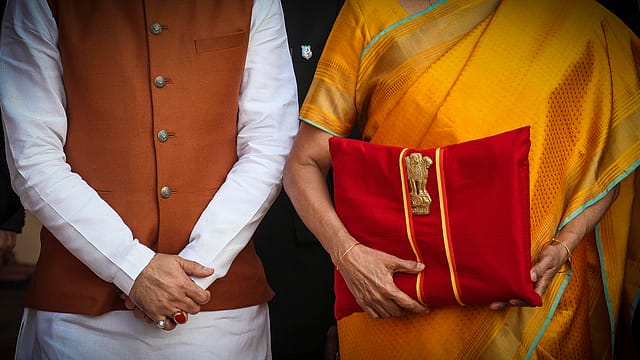Decoding the Budget 2020-21 arithmetic
ADVERTISEMENT

At its heart, any Budget is an accounting exercise and is all about adroitly managing the government’s revenues and its expenditure. While Budget 2020 was no different in this core objective, the task was far more difficult in an environment of growth slowdown and a severe demand crunch across various sectors of the economy.
That the economy is facing a crisis is clear from the fact that the government has pegged nominal growth at just 10% for FY21 and fiscal deficit at 3.8% for FY20 and 3.5% in FY21. If inflation hovers around 4%, then the real gross domestic product (GDP) will grow by only 6%, not the 8% that the economy so desperately required. So there is little hope of the economy picking up real pace next year.
So the real question is whether the government is in a position to meet its revenue targets in FY21 under these trying conditions. The government’s total budgeted expenditure for FY21 (Budget Estimate) pegged at ₹30.42 lakh crore is 12.74% more than the revised estimate (RE) of FY20. Interestingly enough, a detailed analysis of the government’s expenditure shows that while interest payments, which are a drag on the national exchequer, have grown by 13.29%, the Grants in Aid for Creation of Capital Assets—an asset creating expenditure—has only risen by 7.6%. Again, expenditure on capital account has grown by 18.01%—from ₹3,48,907 crore to ₹4,12,085 crore.
January 2026
Netflix, which has been in India for a decade, has successfully struck a balance between high-class premium content and pricing that attracts a range of customers. Find out how the U.S. streaming giant evolved in India, plus an exclusive interview with CEO Ted Sarandos. Also read about the Best Investments for 2026, and how rising growth and easing inflation will come in handy for finance minister Nirmala Sitharaman as she prepares Budget 2026.
So how is the government hoping to finance the country’s expenditure? It plans to increase the gross tax revenue to ₹24.30 lakh crore, an 11.99% increase from the RE of FY20. A component of gross tax revenue, the corporation tax is estimated to grow at 11.55% to ₹6,81,000 crore. But the real surprise in the BE FY21 is the 14.03% growth in income tax from the RE FY20 despite the reduction in tax rates for individuals.
More importantly, even the estimated 12.77% increase in goods and service tax (GST) from RE of FY20 seems like a tough ask, given the fact that it grew by just 3% in the BE of FY20 from the RE of FY19. Moreover, GST collections have repeatedly stayed below the ₹1 lakh crore. Another one is the revenue from “Other Receipts’’ (the disinvestment target) which has risen by 223% over the RE of FY20—especially, after the government missing the disinvestment target of ₹1.05 lakh crore of BE FY20. It could only collect ₹65,000 crore, as per RE FY20, a shortfall of nearly ₹38,000 crore.
The other big surprise was the jump in Other Non-Tax Revenue which grew by a whopping 63.8% in BE FY21 to ₹2,15,465 crore from ₹1,31,525 crore in the RE of FY20.
However, these are only the headline fiscal deficit numbers and do not reveal the full impact of the extra-Budget borrowings of the government. In FY20, total extra-Budget borrowings (including those mobilised through the issue of bonds fully serviced by the government and the financial support extended through loans from the National Small Savings Fund) were estimated at ₹1.73 trillion. In FY21, these borrowings are expected to rise by 8% to ₹1.86 trillion.
If these extra-Budgetary borrowings are included in the Centre’s total borrowings, the actual fiscal deficit would go up to 4.5% of the GDP in 2019-20 and to 4.36% in 2020-21.
